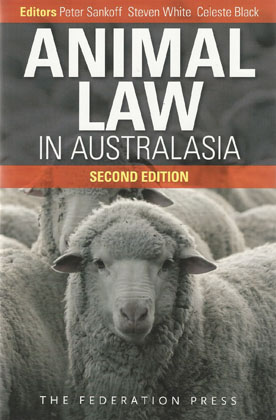We are now closed for the Christmas and New Year period, returning on Monday 5th January 2026. Orders placed during this time will be processed upon our return on 5th January.

Many Australians and New Zealanders still assume that current animal welfare laws provide animals with sufficient protection from human mistreatment, that cruelty is the exception and that, when exposed, perpetrators are prosecuted.
They are wrong on all counts. In 2009, the first edition of Animal Law in Australasia started a "new dialogue" designed to bring these issues to light. This second edition continues the dialogue in an effort to assess core concerns in animal welfare law and examine a host of new issues in the field.
Animal Law in Australasia the first book of its kind ever published in this region, revealed problems with the effectiveness of laws ostensibly designed to protect animal interests by highlighting shortcomings in the existing framework and suggesting ways in which the law could be improved.This second entirely revised edition builds upon the significant developments in animal law that have occurred since the publication of the original version and also addresses emerging areas of concern, with eleven brand new chapters.
Contributions from Australian, New Zealand and international academics and practitioners cover topics ranging from the explanation of basic concepts of animal protection and theoretical underpinnings of animal law to specific matters of interest including the regulation of companion animals, the use of animals in research, dog control legislation, animals in entertainment, the use of codes of welfare, the application of welfare standards to fish, the impact of WTO regulation on domestic efforts to control cruelty and Australia's new regulatory regime for live exports